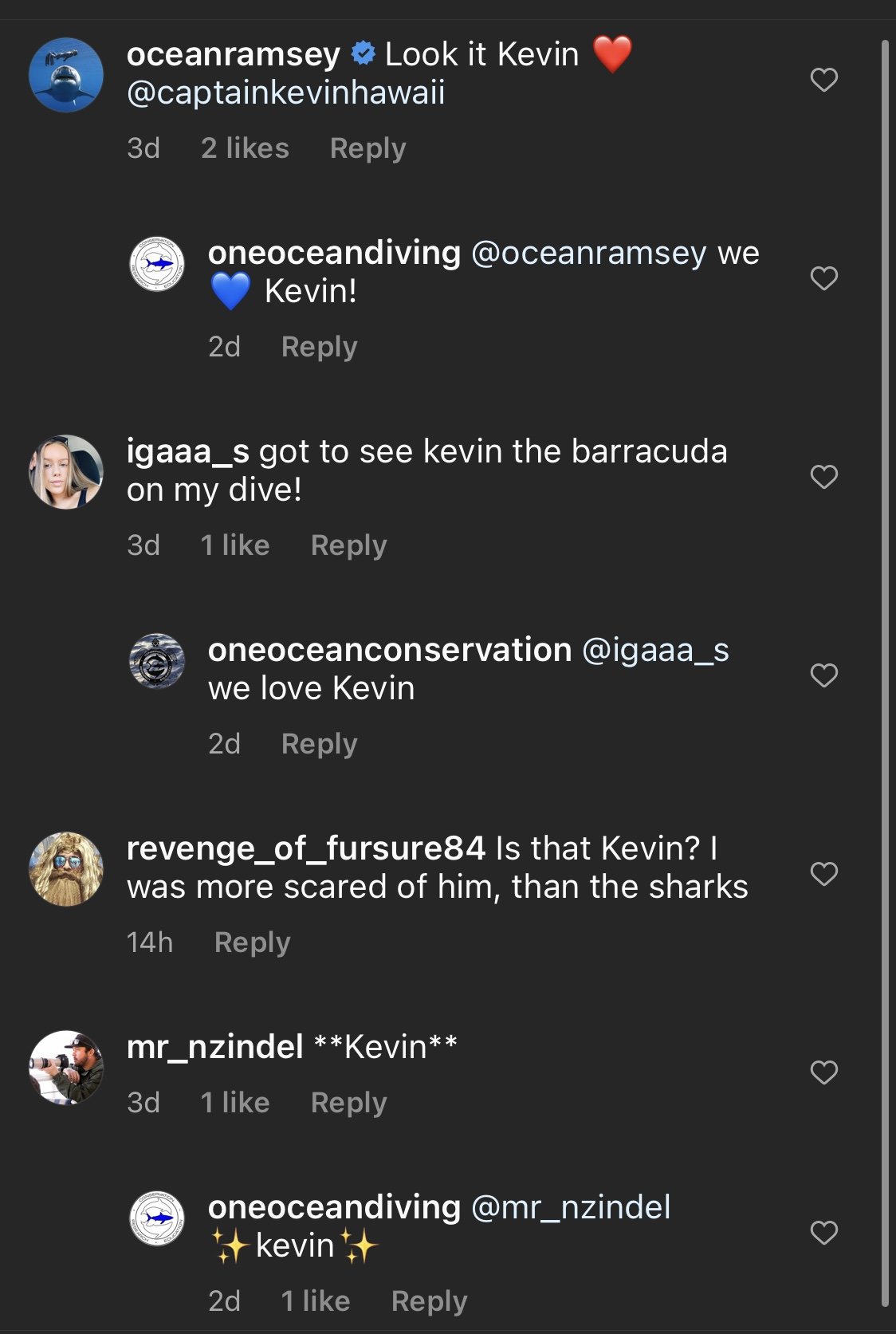Photo by Tyler Flott @beach_ty
Hawai‘i hosts two species of barracuda: the great barracuda or kaku (Sphyraena barracuda) and Heller’s barracuda or kawelea (Sphyraena helleri). Kaku can grow to about six feet long and 100 pounds. Kawelea are active at night, forming schools near the reef during the day. This smaller species grows to about two feet long.
According to a 1997 entry of the Honolulu Star-Advertiser’s Ocean Watch column by Susan Scott, Barracuda eat both large and small fish, striking with lightning bursts of speed. Unlike some fish predators, barracuda can’t expand their mouths to swallow large fish whole. To eat big prey, barracuda slash them to pieces with remarkably sharp teeth. A large barracuda can cut a mature parrotfish in two pieces with a single bite.
“The one time I did see a barracuda catch a fish, it happened with such swiftness that I couldn’t make out any of the details,” Scott writes. “A little fish was there; the barracuda jerked; the little fish was gone.”
A kaku has frequented the One Ocean dive site for over a decade so, like many sharks we have come to know, he has been given a name—fondly referred to by guests and captains as Kevin. Over the years, Kevin has become a fan favorite, rivaling even some of our famous sharks. Each time Kevin is mentioned on social media, guests’ comments reminisce on times they saw the barracuda among a school of Galapagos or sandbar sharks.
According to the Star-Advertiser, kaku are active during the day and camouflage to catch fish. Juvenile kaku typically shelter in reefs and harbors. While adults are sometimes spotted in these types of places as well, they head offshore to hunt in the open ocean when they grow too big to fit.
Barracuda, like sharks, can appear menacing to the inexperienced. Should the average diver be afraid of barracuda?
“Like sharks, the answer is usually no,” Scott writes. “Of the twenty-two barracuda species found throughout the world, the great barracuda is the only one known to attack humans. The risk of being bitten by this fish, however, appears extremely low.”
Between 1873 and 1963, there have been only nineteen confirmed cases of barracuda attacks globally, the column reports. Four of these took place in Hawai‘i.
Also like sharks, most theorize that barracuda attacks only occur by mistake. Barracuda may view the flash of jewelry or camera equipment as a silvery fish. In most cases, barracuda keep their distance from people.
Kevin is no exception. While he is sometimes affectionately called a grump from his demeanor and lack of playfulness, he tends to linger on his own among the sharks and people.
Photo by Tyler Flott @beach_ty
Kevin was named after One Ocean’s Captain Kevin Chadick some fifteen years ago, so unfortunately the story behind it has been lost to lore. While this timeframe makes up the whole of a barracuda’s lifespan, it’s possible “Kevin” is multi-generational, or (at the risk of spoiling a Santa Claus-esque myth) perhaps even a moniker of any kaku who hangs out in our waters.
Photo by Tyler Flott @beach_ty
Whatever the case, if you happen to see a lone barracuda among the flurry of sharks at our dive site, make sure and give a warm aloha.








